iPhone 16 Pro Max vs iPhone 16 Pro: is there any difference now?
We may earn a commission if you make a purchase from the links on this page.

Intro
2024 was basically a catch-up year for the iPhone 16 Pro. After the 15 series started to carve out a clearer line between the Pro and Pro Max, the 16 Pro has now leveled up to match the Pro Max with the same 5x tetraprism zoom lens, identical hardware, plus those nifty new customizable Photographic Styles that all the iPhone 16 models (except the 16e) come packing.
Which naturally begs the big question — what actually sets the iPhone 16 Pro apart from the 16 Pro Max these days? If you’re all about that bigger screen and bigger battery life, your mind’s probably already made up — nothing beats the massive 6.9-inch Pro Max experience. But maybe you’re wondering if it’s smarter to save a couple hundred bucks and go for the 16 Pro instead.
Also, buckle up: a new and supposedly "the biggest in a decade redesign" is coming to both these iPhones this fall with iOS 26. More on the new features in the performance section below.
iPhone 16 Pro Max vs iPhone 16 Pro differences explained:
| iPhone 16 Pro Max | iPhone 16 Pro |
|---|---|
| Design Bigger and heavier: 163 x 77.6 x 8.25 mm 227 g New Camera Control Button and Action Button | Design More compact, with a 6.3-inch screen 149.6 x 71.5 x 8.25 mm 199 g New Camera Control Button and Action Button |
| Display Bigger 6.9-inch screen with slimmer borders 120 Hz ProMotion display | Display Bigger 6.3-inch screen with slimmer borders 120 Hz ProMotion display |
| Chipset Apple A18 Pro chipset | Chipset Apple A18 Pro chip |
| Memory and storage 8GB RAM Starts from 256 GB for $1,199 | Memory and storage 8GB RAM Starts from 128 GB for $999 |
| Battery 4,685 mAh battery | Battery 3,582 mAh battery |
| Camera Triple camera with 5x tetraprism lens New 48 MP ultra-wide camera | Camera Triple camera with 5x tetraprism lens New 48 MP ultra-wide camera |
Table of Contents:
Also read:
- Apple iPhone 16 Pro review
- iPhone 16 Pro Max review
- The best iPhone to buy: our verdict
- OnePlus 13 vs iPhone 16 Pro Max: David vs Goliath
Design and Display Quality
Little brother, big brother
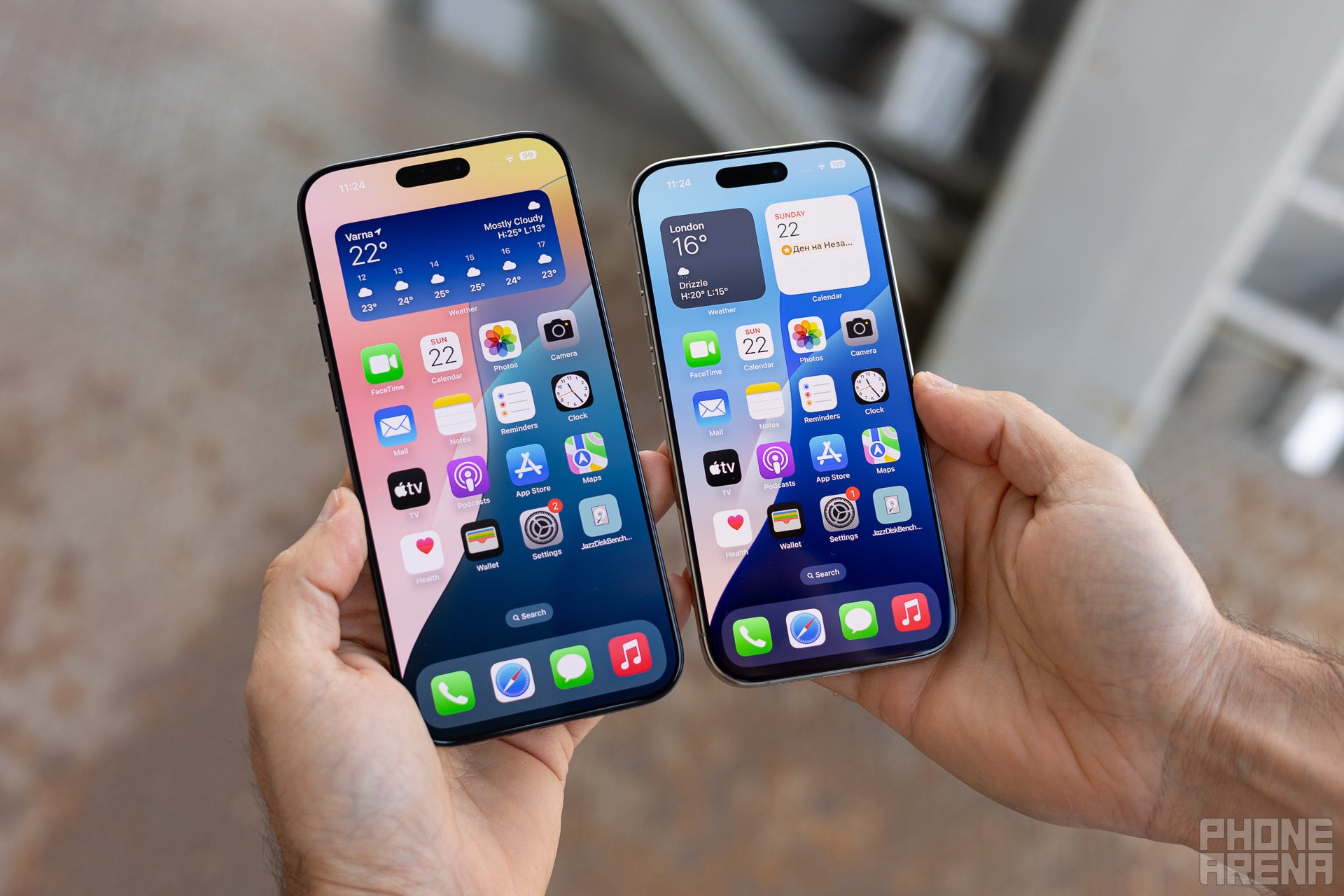
Mini-Me? (Image credit - PhoneArena)
iPhones typically look pretty similar — a Pro Max is a slightly enlarged Pro, and same holds true for the iPhone 16 Pro Max and iPhone 16 Pro. And it's the second gen of titanium-coated iPhones, now with a refined process and new color added. Again, no discrepancy here — both Pros get the Desert Titanium paintjob.
The bezels around the screens have also shrunk further, making them the thinnest borders around iPhone displays yet. Uniform across the entire display, of course. This allows the screens to grow a bit, with the bodies of the phones staying the same-ish size. The iPhone 16 Pro Max now has a 6.9-inch display, the iPhone 16 Pro — 6.3 inches.
The bezels around the screens have also shrunk further, making them the thinnest borders around iPhone displays yet. Uniform across the entire display, of course. This allows the screens to grow a bit, with the bodies of the phones staying the same-ish size. The iPhone 16 Pro Max now has a 6.9-inch display, the iPhone 16 Pro — 6.3 inches.
The panels are OLED as before, and have a 120 Hz max refresh rate with the same ProMotion branding. They are Super Retina XDR displays, otherwise known as "these go to 2,000 nits peak brightness", which has been surpassed by Android phones since, but make no mistake — it's plenty enough for HDR content, even in daylight. The minimum has now fallen to 1 nit, which will make iPhones slightly more comfortable to use at bedtime.
These panels are protected by a next-gen Ceramic Shield glass on the front. That's Apple's tempered glass solution, which made headlines with how shatter-resistant it is. Hopefully, the new iPhone 16 Pro and 16 Pro Max are also more resistant to random scratches. We'll have observations on that after a few months have passed.
There's a new Camera Control button, which will be able to invoke the camera app whenever you want. Different from the Action Button from 2023, this one is a mechanical button that also has a capacitive pad on top and, and it can register a half-pressure, swipes, as well as full press (upon which, it clicks in). You can slide across the button to control various camera settings on the fly — exposure, focus, bokeh, or scroll through Photographic Styles (the new age version of filters). One press takes a picture, press and hold to record video.
The titanium finish now comes in four colors — Titanium Black, Titanium White, Natural Titanium, and the brand-new Desert Titanium.
- Also read: iPhone 16 colors: all the rumored shades
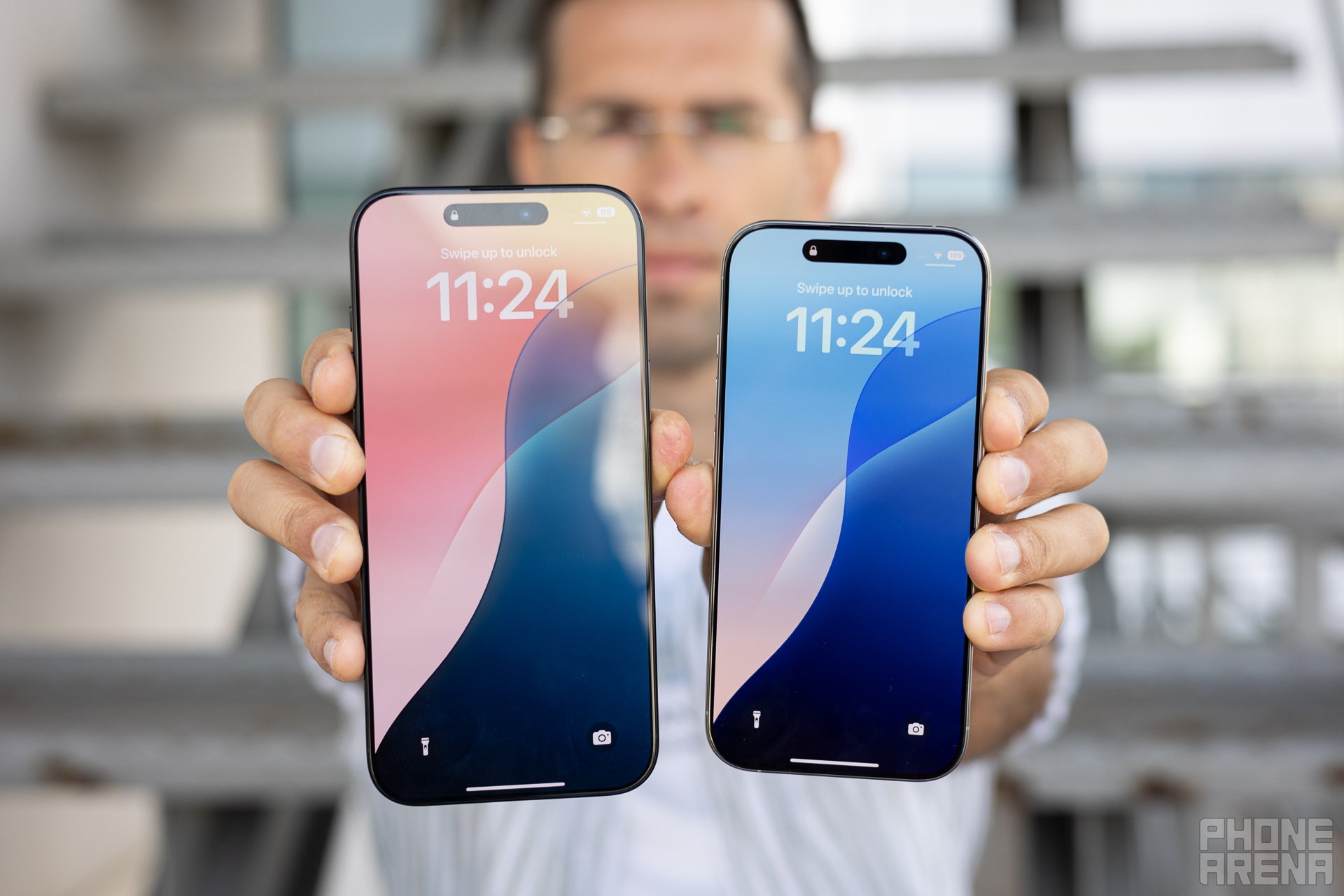
The difference in screen size between the Pro Max and the Pro (Image credit - PhoneArena)
OK, so Apple states 2,000 nit peak brightness — this measures only a part of the screen for a fraction of time. Our benchmark measures sustained fullscreen brightness, which is why you see numbers slightly north of 1,000 nits. That's still plenty enough for you to enjoy your content, even out in the daylight. Not near what some Android flagships can do nowadays, but it's fine. A big upgrade this time is that the iPhones can now hit 1 nit or lower for minimum brightness. This will make them much more comfortable to use by the bedside or inside a dark bar.
As you can see, there are slight differences in color accuracy — most OLED panels do come out slightly different. But, in general in real life, these look lovely. Especially if you use True Tone to have the iPhones automatically adjust color warmth.
Performance and Software
Pocket power
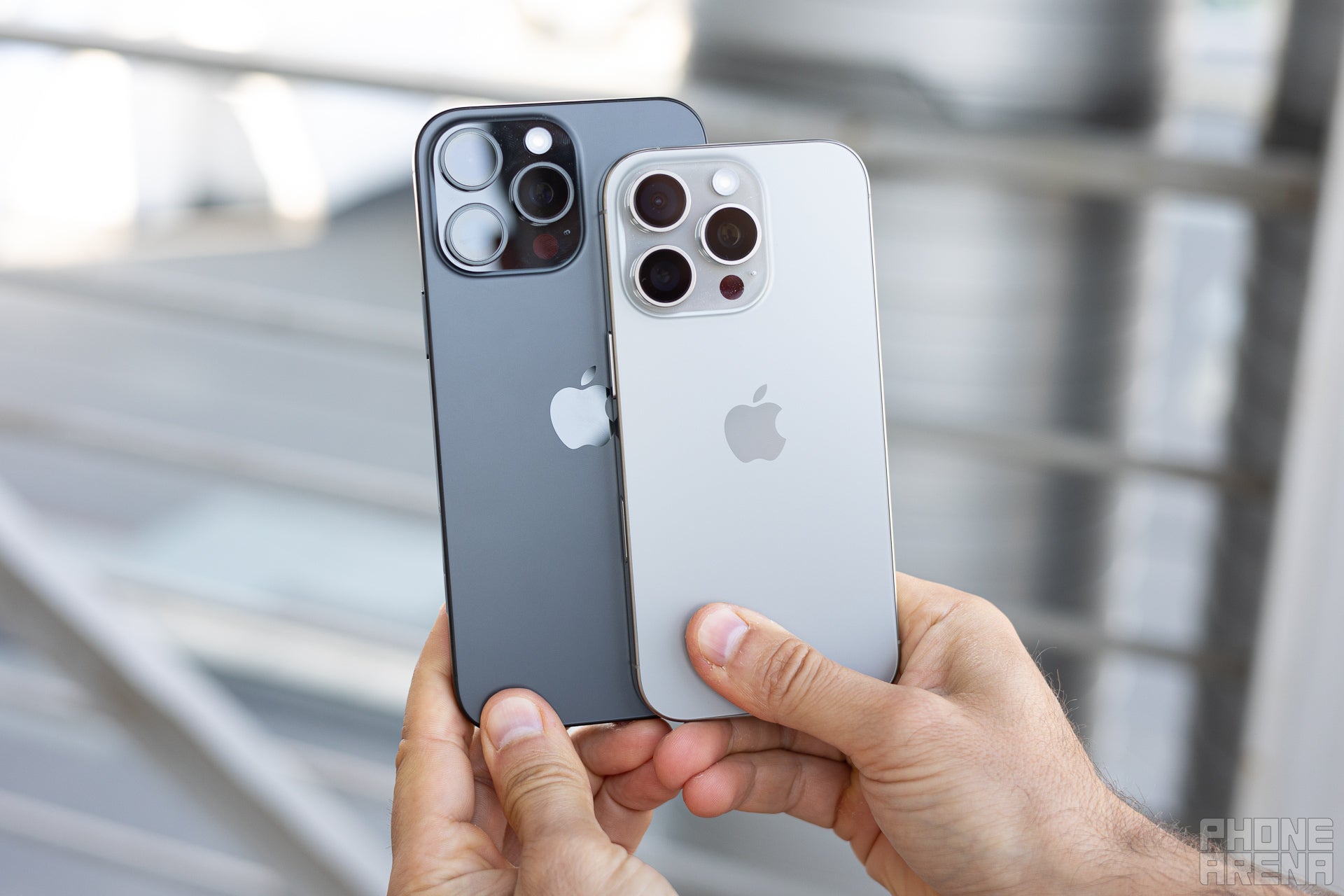
A18 Pro, doubled up! (Image credit - PhoneArena)
The new iPhones have new chips — Apple A18 in the regular models, Apple A18 Pro in the Pro models. Both iterations have 6-core CPUs with two performance and four efficiency cores. The regular has a 5-core, the Pro has a 6-core GPU, same as 2023's Apple A17 Pro.
Apple also took a little bit to talk about improved cooling and 20% increase in sustained performance, which would be a nice upgrade, as the previous year's models suffered some throttling issues. Well, let's check with the benchmarks, shall we?
And here, we see how the roominess inside the iPhone 16 Pro Max allows for better thermals — the 16 Pro throttles down quite a lot during the 3DMark Wildlife test (that's a benchmark that has been specifically designed to bog down and overload the smartphone). That's just a point to consider if you are a poweruser that intends to do a lot — a lot — on their new iPhone. Especially gaming.
But since it's the same processor in both, you have the staples of modern-age top tier silicon — hardware accelerated ray tracing, energy efficiency, power, and NPU cores for the AI tasks. Plus 8 GB RAM on all new iPhones to ensure the Apple Intelligence runs smoothly.
The iPhone 16 series now also come with Wi-Fi 7 — the newest and fastest protocol and hardware, which allows you to connect to your (compatible) router over multiple bands for a noticeable increase in transfer speeds and stability.
When first shown off, iOS 18 promised to come with a load of AI features — text editing, transcripts, and all the tricks we've seen from other AI platforms, all gathered in one operating system.
But it didn't launch with all of them. In fact, we got the first batch of Apple Intelligence features in October, when iOS 18.1 was pushed out. It came with the light stuff, pertaining to text and notifications — notification summaries, phone call summaries, rephrasing within emails, texts, notes. You can now also get super-specific with your Photos search, looking for people in specific settings and doing specific actions.
In mid-December, we got iOS 18.2 with Visual Intelligence and ChatGPT integration, plust the Image Playground app which bakes in image generation throughout your iOS apps. When you are in iMessage, you can generate a custom emoji. When you are in Notes, you can generate an image that can even pull context from the words around it.
Update: While Apple Intelligence is still mostly a no-show and there are no big Siri updates, Apple will give both these new iPhones a fresh coat of paint with a new iOS 26 arriving in the fall of 2025.
So what's in this supposedly biggest visual shake-up in a decade?
It’s called ‘Liquid Glass’, which sounds faintly ominous. You can either stick with the default look or opt for a full-on transparent, glassy interface that, in a truly baffling throwback, is said to resemble Windows Vista. I’m not entirely sure we needed a revival of the digital aesthetics of 2007, but here we are.
Beyond this glassy abyss, there are some genuinely welcome tweaks. The Camera app is being decluttered, hiding all the complicated modes so people like me can just point and shoot without accidentally filming in slo-mo. Photos is also getting less messy with two buttons that give you quick access to user-favorite features like albums.
More importantly, Apple is finally taking on the scourge of spam. A new Call Screening feature, much like the one Pixel phones have had for ages, will fend off telemarketers, while a filter will tackle junk texts. This, frankly, is the headline. The rest is just detail.
There are other bits and bobs, of course. Live translation during calls (another feature borrowed from Android), polls in group chats (to settle the takeaway debate with data), and Apple Maps that will supposedly outsmart traffic jams on your commute by predicting your routing. It all sounds perfectly fine.
There are other bits and bobs, of course. Live translation during calls (another feature borrowed from Android), polls in group chats (to settle the takeaway debate with data), and Apple Maps that will supposedly outsmart traffic jams on your commute by predicting your routing. It all sounds perfectly fine.
Camera
Ultra-wide upgrade possible
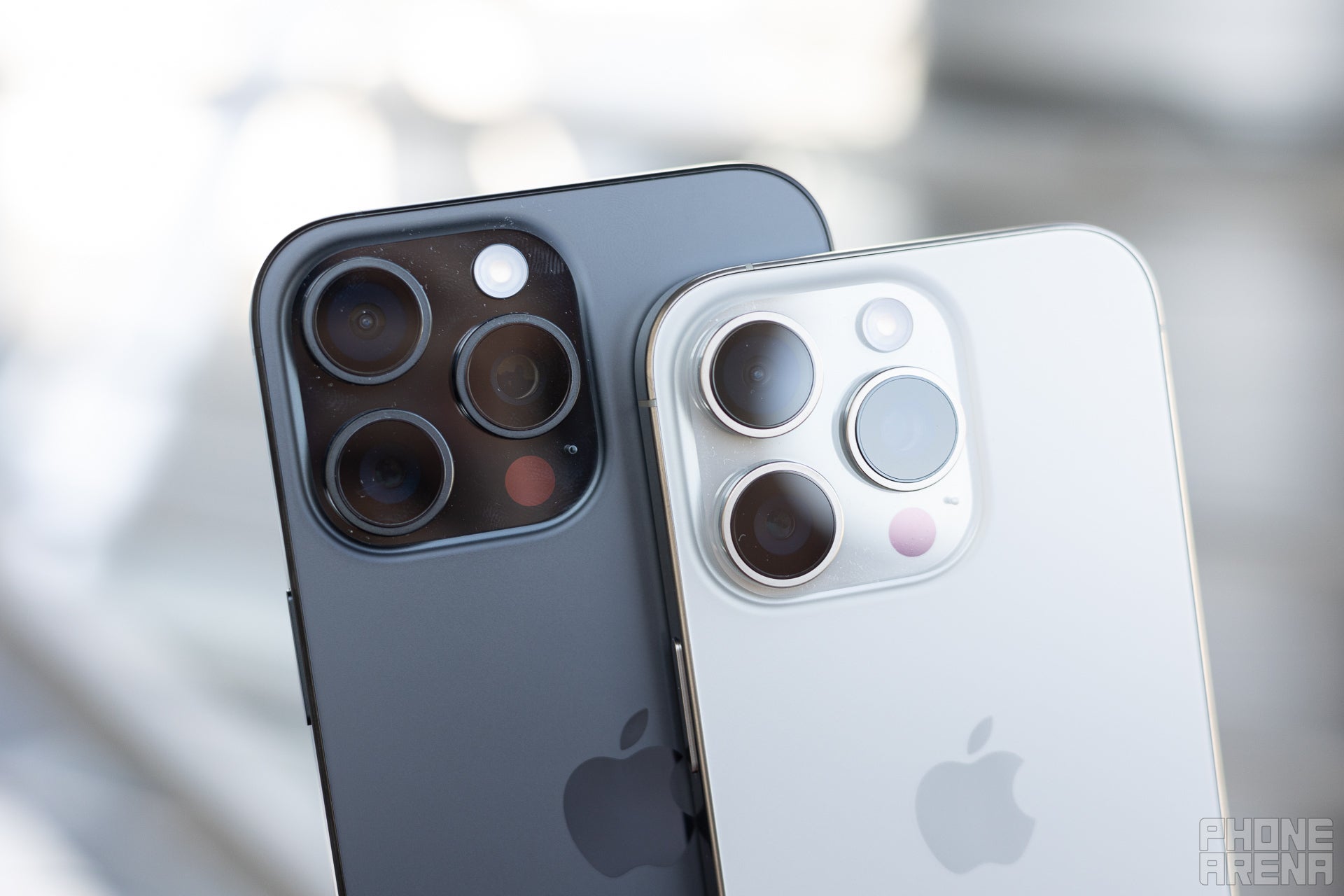
Corporate says these are the same picture (Image credit - PhoneArena)
In the past, when a Pro Max phone had something unique on its camera, the next year's Pro would also receive it. History repeats itself, as the iPhone 16 Pro gets the 5x tetraprism lens that was exclusive to the 15 Pro Max. So, we are back to having identical camera modules.
And we do mean identical — both Pro iPhones get the 48 MP ultra-wide camera upgrade, they have the 48 MP main camera, and the 12 MP 5x zoom camera. The selfie cameras are, as before, 12 MP.
PhoneArena Camera Score:
In reality, there are miniscule differences in performance compared to the previous iPhone 15 Pro Max. The improvements come from the software upgrades, which Apple seems to be keeping exclusive to the iPhone 16 series and, presumably, future models as well.
We saw the score, here are some samples:
iPhone 16 Pro and iPhone 16 Pro Max camera samples:
Apple has upgraded the Photographic Styles editing menu, now allowing you to dive deeper and set the saturation on individual colors, to further develop your own... well, style of expression. When first introduced, these were presented as a way for you to control how the camera post-processes photos. Add more contrast, edit color temperature, that type of thing. Now, they are a bit more elaborate and you can even go into your Photos gallery and edit the Photographic Style retroactively.
At this point, you may be asking yourself "So, aren't they just filters", and so are we. But it's worth noting that you can't add or edit Photographic Styles on photos taken with iPhones older than the 16, so it's probably a part of the image meta that the iPhone records at the time of taking the photo.
There's also the new Camera Control Button, that we should talk about. It is present on all new iPhone 16 models, not just the Pro flavors. It can be pressed down, but also registers half-presses to change settings, and swipes to adjust the chosen setting.
Apple upgraded the slow-mo capabilities of the new Pro iPhones. You can record 4K videos at 120 FPS now. So, for regular 30 FPS or cinematic 24 FPS projects, that means you can slow footage down to 20% playback speed.
There's a new pro Audio Mix editing mode, which allows you to change captured audio post-recording. Employing AI and the iPhone 16 Pro's excellent microphones — you'd be able to isolate voices or change the way audio is mastered at a tap. We will experiment with this further as it sounds very interesting and almost impossible.
This is all supported by a "Studio-quality 4-mic array" — don't ask which studio and what type of quality — and next-level wind noise cancellation.
The bottom line is, the camera experience on both the iPhone 16 Pro and iPhone 16 Pro Max is the same.
- Also read: iPhone 16 camera: All the upgrades
Battery Life and Charging
Biggest battery in an iPhone yet...
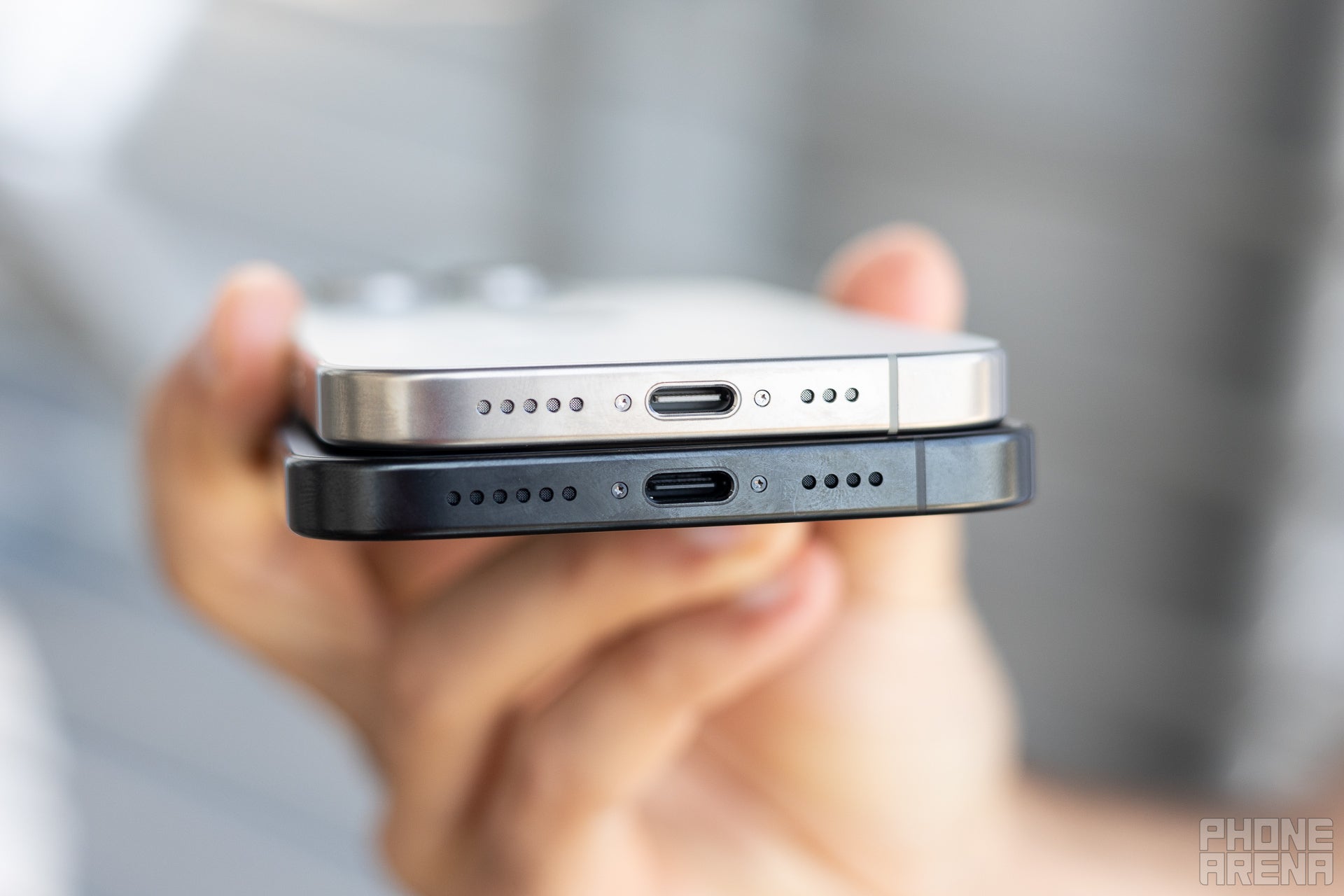
Ah, sweet USB C (Image credit - PhoneArena)
iPhones typically don't have the massive batteries you can find in Android flagships. But iOS is quite efficient at preserving battery life — apps get frozen in the background, when you are in standby mode, you barely lose percentages. The iPhone 15 Pro Max is often touted to last two days with casual use.
For the 16 Pro series, Apple did touch upon their upgraded capacities and great battery life, and thanks to teardowns, we now know the exact capacities. The iPhone 16 Pro Max has a 4,685 mAh cell, and the iPhone 16 Pro has a smaller one, at 3,582 mAh.
That is, indeed, a massive difference, so let's take a look at the benchmarks -
PhoneArena Battery and Charging Test Results:
That is a massive difference — you get around 20-30% more juice out of the iPhone 16 Pro Max. But it also makes sense, as it has 1,000 mAh on top of the smaller one.
Charging is, unfortunately, not very fast. With 20 W wired charging, it'll take you and hour and fourty minutes or a bit more to get from 0% to 100% with either of these phones. If you only have 30 minutes to charge up — that'll get you a good 57-58%, which should be plenty to last you through the day.
The wireless charging, on the other hand, has been upgraded. MagSafe can now work at up to 25 W, so it charges your iPhone 16 Pro or Pro Max at about the same speed as the wired connection.
There are some rumors on the Internet that the new Pro iPhones support up to 40 W power draw from their ports. But that's not exactly for charging — we are also in the process of figuring it out. But, basically, it goes like this — if you are playing a game or running a benchmark or heavy app on the phone while it's plugged in, then it will draw more power from the charger. However, if you are simply plugged in and it's idling, it'll simply draw 20 W.
Also read:
- iPhone 16 Battery and charging: Here's what to expect
- Also read: iPhone 16: deals to anticipate
Specs Comparison
For the most part, it looks like the new Pro siblings will be quite similar on the inside. Our full iPhone 16 Pro vs iPhone 16 Pro Max specs table supports that information. Here are the core specs:
| Specs | iPhone 16 Pro Max | iPhone 16 Pro |
|---|---|---|
| Dimensions | 6.42 x 3.06 x 0.32 in (163 x 77.6 x 8.25 mm) | 5.89 x 2.81 x 0.32 in (149.6 x 71.5 x 8.25 mm) |
| Screen | 6.9-inch ProMotion OLED 120 Hz | 6.3-inch ProMotion OLED 120 Hz |
| Processor | Apple A18 Pro | Apple A18 Pro |
| RAM, Storage and Price | 8 GB / 256 GB / $1,199 | 8 GB / 128 GB / $999 |
| Cameras | 48 MP main 48 MP ultra-wide 12 MP 5x telephoto 12 MP front | 48 MP main 48 MP ultra-wide 12 MP 5x telephoto 12 MP front |
| Battery Size | 4,685 mAh | 3,582 mAh |
| Charging Speeds | 20 W wired 25 W wireless MagSafe | 20 W wired 25 W wireless MagSafe |
- You can also use PhoneArena's tool to compare iPhone models.
Which one should you buy?
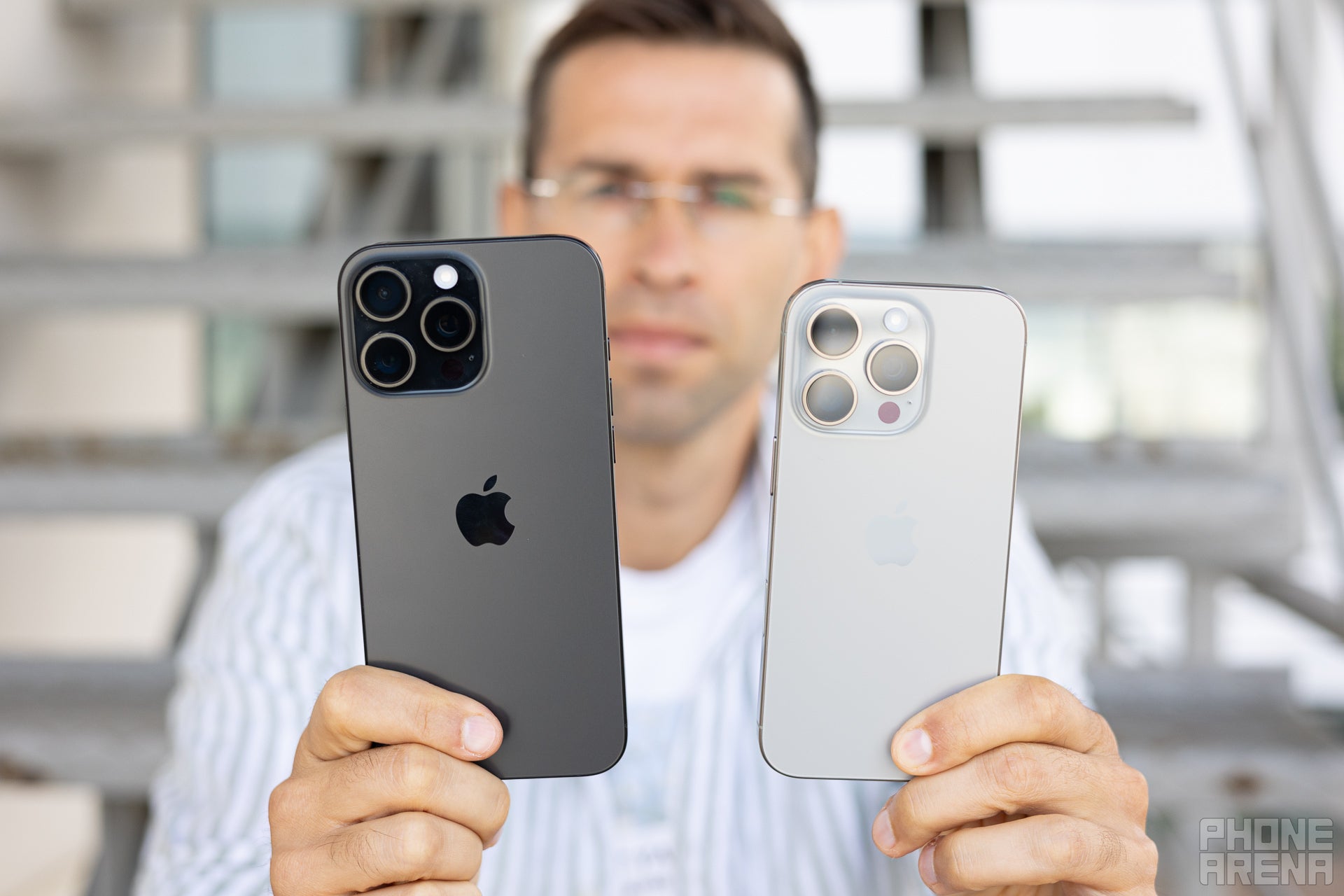
Go big or go home? For $200, it might be home! (Image credit - PhoneArena)
Looks like our first impressions nailed it — 2024 was definitely a “catch-up year” for the iPhone 16 Pro. At the end of the day, these two are basically the same phone, just in different sizes. Going for the smaller model doesn’t mean you’re giving up much, and picking the bigger one mostly just gets you more screen and battery.
Here’s the rundown: the base iPhone 16 Pro starts at $999 with 128GB of storage. For most people, that’s plenty — unless you’re shooting crazy amounts of 4K video at 120 FPS, then you might want more space. The base 16 Pro Max kicks off at $1,199 with 256GB, and prices go up from there. The Pro Max is geared for the power users, with better thermal management to keep things running smoothly under heavy use, while the smaller Pro might throttle a bit when pushed hard. That said, in real-world use — like gaming — both handle themselves just fine.
So, why pick one over the other? The 16 Pro is more compact and easier to handle one-handed, which is impressive for a 6.3-inch phone. Plus, it’s the cheaper option at $999. But if you’re serious about 4K video, you’ll probably want to skip the 128GB model.
The 16 Pro Max, with its giant 6.9-inch display, is the obvious pick if you’re into media, gaming, or just want longer battery life thanks to the bigger battery.
At the end of the day, that’s the gist. Which one fits your style best?
Here’s the rundown: the base iPhone 16 Pro starts at $999 with 128GB of storage. For most people, that’s plenty — unless you’re shooting crazy amounts of 4K video at 120 FPS, then you might want more space. The base 16 Pro Max kicks off at $1,199 with 256GB, and prices go up from there. The Pro Max is geared for the power users, with better thermal management to keep things running smoothly under heavy use, while the smaller Pro might throttle a bit when pushed hard. That said, in real-world use — like gaming — both handle themselves just fine.
So, why pick one over the other? The 16 Pro is more compact and easier to handle one-handed, which is impressive for a 6.3-inch phone. Plus, it’s the cheaper option at $999. But if you’re serious about 4K video, you’ll probably want to skip the 128GB model.
The 16 Pro Max, with its giant 6.9-inch display, is the obvious pick if you’re into media, gaming, or just want longer battery life thanks to the bigger battery.
At the end of the day, that’s the gist. Which one fits your style best?
Follow us on Google News













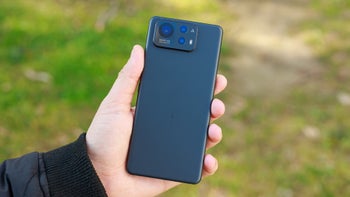







Things that are NOT allowed:
To help keep our community safe and free from spam, we apply temporary limits to newly created accounts: